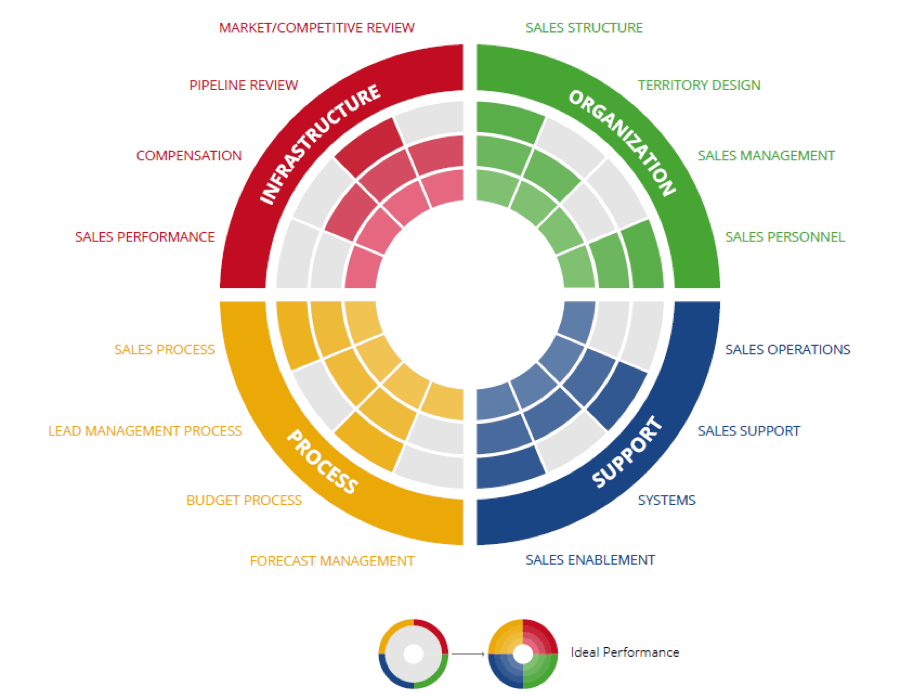
How to Sell My Healthcare Business
Selling a healthcare business presents unique challenges. Learn how to navigate these obstacles and find a specialist advisor to streamline your sale.
If you are buying a business, beware some common surprises that can have a major negative impact on future business results. Unfortunately, these surprises happen all too often. After the transaction you discover:
The standard due diligence process provides metrics for company valuation, but for the most part, this data is based on historical financial performance and trends or projections for the future. With today’s lightning pace of change, technology, and low barriers to entry in many markets, how predictive is past revenue of future results?
One of the most critical determinants of future company performance is the sales engine which, when tuned up and performing at an optimal level, will produce profitable revenue. Sales revenue is the lifeblood of any company. Yet the capabilities of the sales organization to drive future revenue and the veracity of sales projections are rarely challenged nor thoroughly evaluated in the due diligence phase.
A quantitative, in-depth, evaluation of the company’s key sales drivers may indicate a big opportunity for unlocking significant revenue growth, or it may find the revenue projections used in the valuation are unlikely to materialize. Either way, it is important to gain insight and understanding of the company’s sales infrastructure.
In the book The 4 Disciplines of Execution [1], the authors describe the concept of lead measures and lag measures. “A lag measure is the measurement of a result you are trying to achieve … and lead measures foretell the result. Lead measures are both predictive and influenceable.” If the standard due diligence process is derived largely using lag measures, such as a company’s past financial performance, then an in-depth analysis of the company’s sales engine can uncover some lead measures that can be influenced in a positive way and are more predictive of future revenue results.
One of most important lead measures of future revenue is the sales forecast, which is typically derived from the company’s Customer Relationship Management (CRM) tool. If the CRM is set up correctly and used consistently by the sales team, the software will generate a revenue forecast by adding up the estimated revenue size from all the deals in the pipeline and assigning a probability and close date. There is typically an optimistic bias from those responsible for inputting the data it should be closely analyzed to understand potential risk factors. In many companies, particularly in smaller companies, the CRM data inputs are inconsistent resulting in additional variability in the sales forecast.
There are four main pieces of the sales organization that should be analyzed and benchmarked against best in class to ensure long term viability and they are: organization, infrastructure, process, and support. Figure 1 below shows some of the key components, which fall under each of the piece.
Figure 1 [2]

Recently the owner of B2B business with $28M in annual sales engaged the services of private equity firm to facilitate a sale of the business.
For the past few years, sales declined and this put pressure on the capital structure of the company. As part of the due diligence process an in-depth analysis of the sales organization was conducted to understand what issues needed to be fixed, how real the revenue forecast was, and how much potential existed to reverse the revenue declines to start growing the business.
The report identified several challenges, which had a big impact on the firm’s ability to generate revenue in the future. Among the key challenges were:
Some of these issues could be corrected by renovating the sales process and organization, but others reflected changing market dynamics that required the need for new strategies to gain a competitive advantage.
The report also uncovered some opportunities that could mitigate the downside revenue pressure and provide revenue from new sources if new strategies were implemented quickly. Some of the more significant opportunities identified were:
The company hired a senior sales leader who was tasked with reversing the present course and building the needed sales infrastructure. Once the identified changes were implemented it took about six months to reverse the sales decline and revenue growth started within a year.
In many small to medium size businesses it is common to see the lack of a sales process. Therefore, without the proper metrics there is a lack of accountability and limited visibility into future sales.
The use of a metric-driven analysis of the company’s sales organization can provide business owners and investors with a more complete and accurate picture of the company’s ability to generate future revenue. Taking the time to thoroughly analyze lead indicators, such as the company’s sales process, when contemplating buying or selling a business may end up being a critical factor to improve the odds of engaging in a winning transaction.
Dave Winkle is the Founder and President of Peak Performance Sales Solutions, a company that provides best-in-class sales planning, strategy and execution for small and medium sized businesses to accelerate revenue growth.
[1] Chris McChesney, Sean Covey, and Jim Huling, The 4 Disciplines of Execution (New York: Free Press, 2012), 46.
[2] ©2018 by Sales Xceleration
